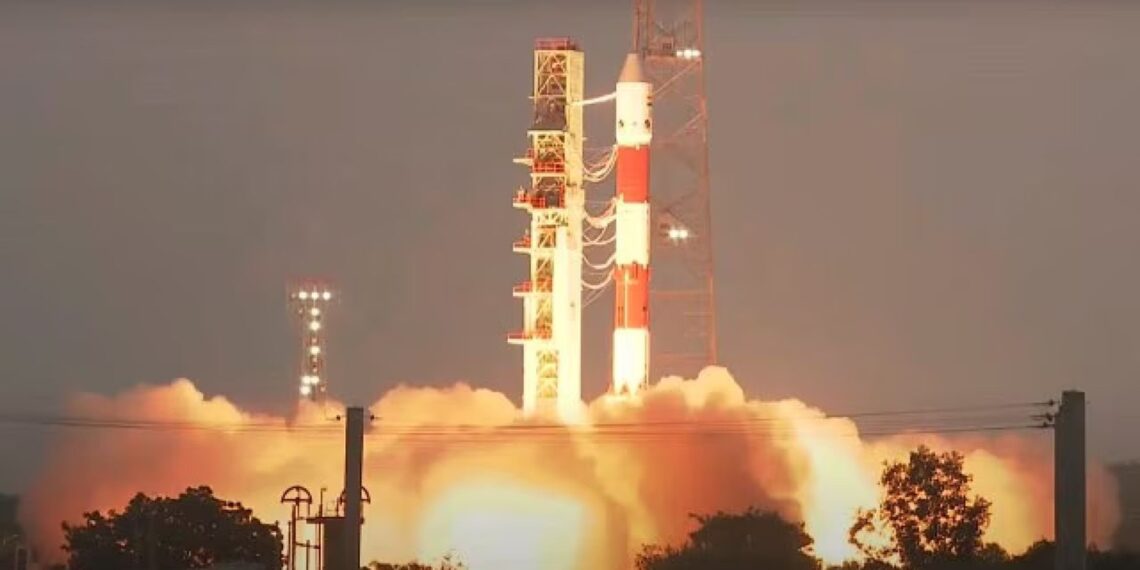Sriharikota (Andhra Pradesh): The Indian Space Research Organisation (ISRO) confirmed that its Earth observation mission, launched aboard the PSLV-C61 rocket early Sunday morning, could not be completed due to an issue in the third stage of the launch vehicle.
The mission, ISRO’s 101st from the Sriharikota spaceport, lifted off as scheduled at 5:59 am.
The Polar Satellite Launch Vehicle (PSLV), known for its reliability, performed nominally through the first and second stages.
However, trouble began during the ignition of the solid-fuel third stage.
“Today we targeted the 101st launch from Sriharikota, the PSLV-C61 EOS-09 mission. The PSLV is a four-stage vehicle and up to the second stage, the performance was normal. The third stage motor started perfectly, but during its functioning we observed an anomaly. The mission could not be accomplished,” ISRO Chairman S. Somanath said, explaining that a pressure drop was recorded in the motor chamber of the third stage.
He added, “We are studying the entire performance and will come back with our findings at the earliest.”
The unexpected outcome came as a surprise to many, given the PSLV’s stellar track record as ISRO’s most dependable launch vehicle.
Up until the third stage, the mission had progressed largely as expected, with only minor deviations from planned timings during stage separations and ignitions.
The first stage separation occurred at 110 seconds (vs. the planned 111.64 seconds), while the second stage ignition happened at 110.2 seconds, slightly ahead of the scheduled 111.84 seconds.
The second stage separation took place at 261.8 seconds, just shy of the 264.34-second target.
Despite early indications of a nominal flight, the pressure anomaly during the third stage ultimately disrupted the mission trajectory.
A former ISRO official, speaking on the condition of anonymity, noted that the vehicle likely fell into the sea after the anomaly, as it occurred at an altitude of around 450 km.
ALSO READ: Centre to establish 4 integrated aquaparks in Northeast to boost fisheries sector
The satellite onboard, EOS-09, was intended as a follow-up to the EOS-04 launched in 2022. It featured a Synthetic Aperture Radar (SAR) payload designed for all-weather, day-and-night Earth observation.
The satellite was aimed at supporting diverse applications including agriculture, forestry, urban planning, disaster management, and national security.
The mission had also been designed with sustainability in mind.
A dedicated amount of fuel was reserved to de-orbit the satellite after its mission life, allowing it to decay within two years and contribute to ISRO’s effort toward debris-free missions.















